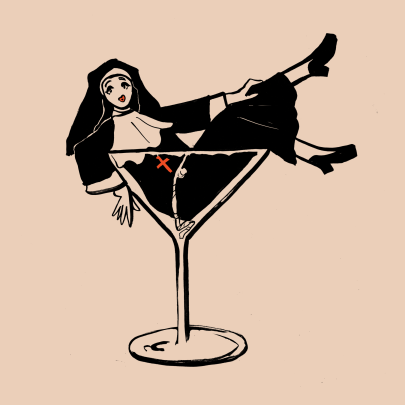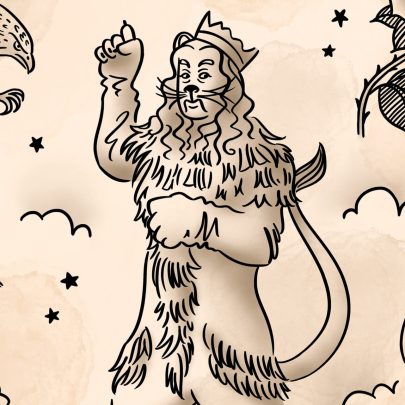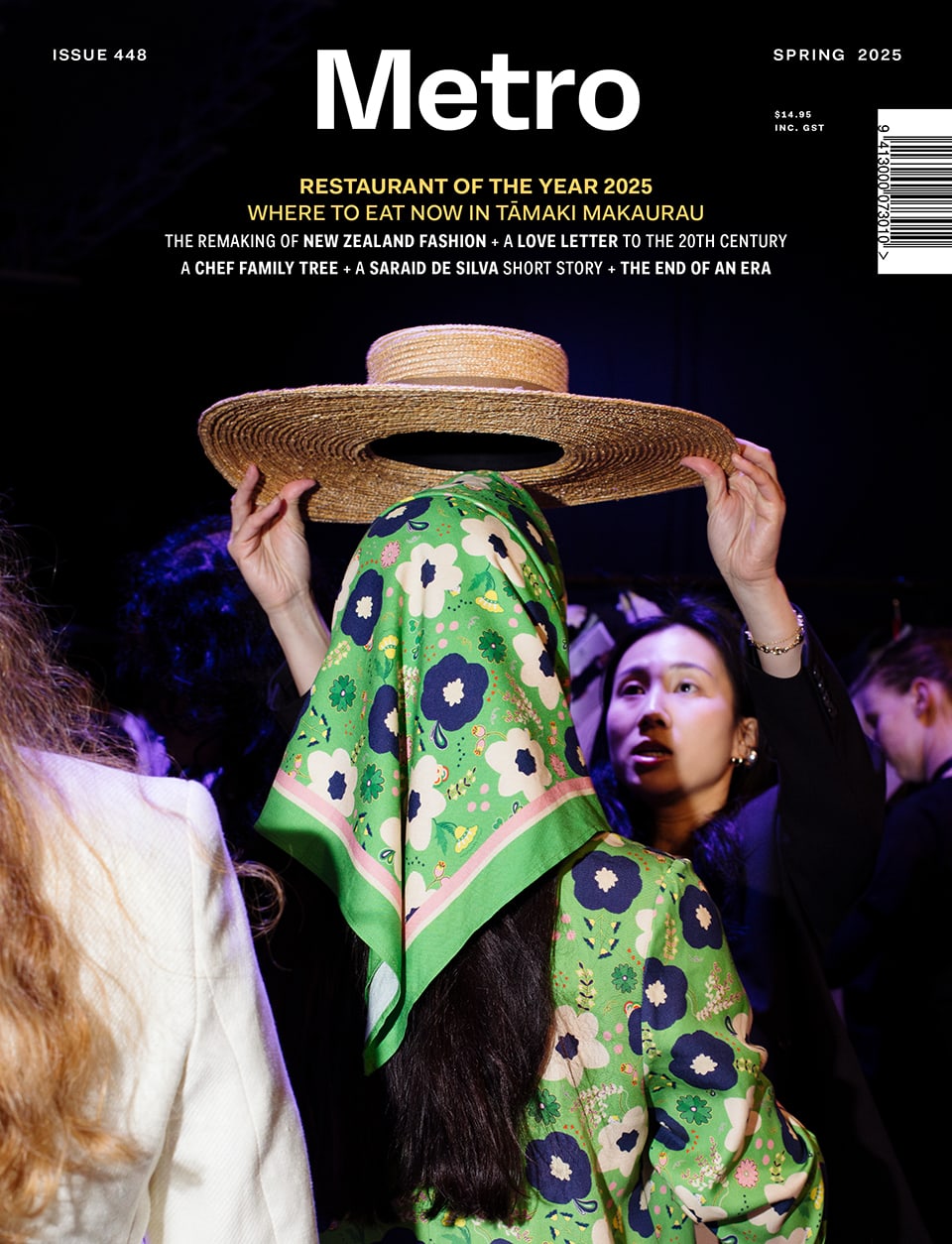Sep 19, 2016 Theatre
Rhodes, like the grand majority of opera-trained singers, is a decent enough actor without actually being a good one. You would not cast him first, or fifth, in a professional non-singing production, unless the role called for very broad strokes. But his voice. My god, his voice. I mean that last sentence literally; if I wanted someone to sing the role of God, he’d be my pick. He sounds like molten dark chocolate might sound if you gave it a voice and then spliced in some thunder storm.
He sounds like molten dark chocolate might sound if you gave it a voice and then spliced in some thunder storm.
A thunderous crash is how the production opens: a great rumbling chord on a grand organ, recorded at the Melbourne Town Hall and blasted out over the Civic’s sound system. An extended organ solo, very gorgeous, very Gothic, leads into the opening ensemble number, “The Ballad of Sweeney Todd”, crisply sung as a cascading series of solos, with the lead passing from singer to singer across the gloomy, expansive Victorian London set, until finally Sweeney himself enters in a terrible blaze of light. It’s well conceived as a piece of staging, and Sondheim’s intricate lyrics emerge cleanly. In some of the later ensemble moments, this won’t be the case.
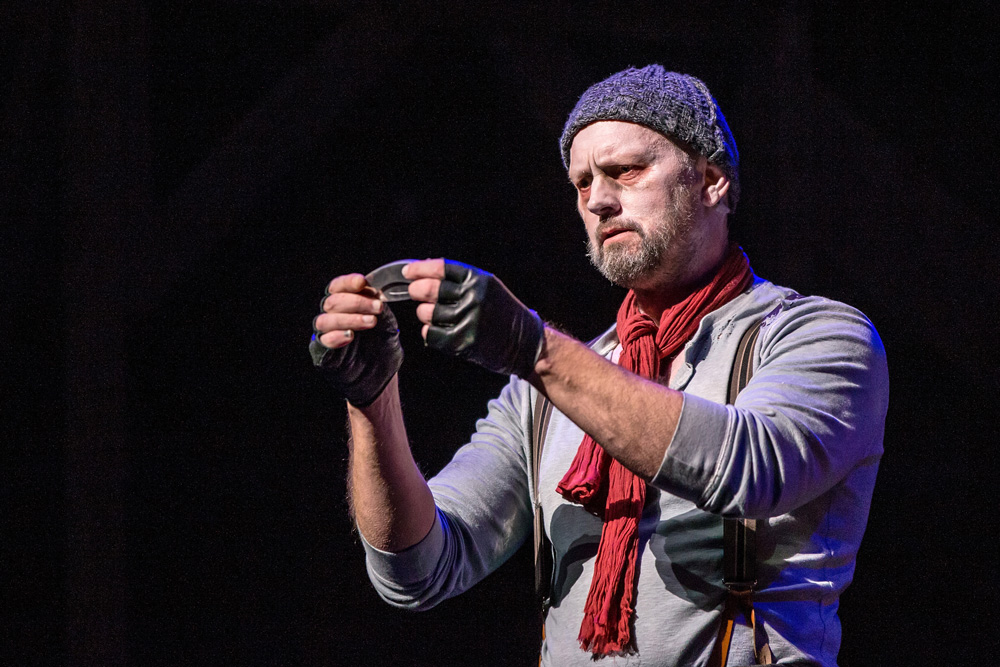
I have only two real beefs with this production, as opposed to with the musical itself: one is that the vocal line occasionally gets smudged when multiple voices are singing, and the other is that a few details of choreography seem directionless. Characters run up stairs for no obvious reason, stop, and come back down, as though keeping them in motion mattered more than where they go or what they might be thinking. These are minor problems only; most of the singing is clear, a non-trivial virtue given the thorny heft of the lyrics, and there are some wonderful bits of stage direction, particularly the seamless shift by which a full ensemble chorus abruptly devolves into chaos and becomes an asylum scene.
The slightly larger problem is that Sondheim’s Dickensian mousetrap of a story requires a large cast, but to my mind doesn’t succeed in finding interesting uses for all of its characters: Sweeney, terribly wronged and nursing a long thirst for vengeance, is going to back himself into a corner where several terrible coincidences can fall on him like a series of axe strokes, and for this to happen, a lot of characters have to be moved through a lot of plot mechanics, some of which do feel very mechanical. The scenes and the songs involving Sweeney’s long-lost daughter and her idealistic young suitor, especially, have never done much for me: they’re clearly meant to counterpoint the corruption, venality and demonic rage of the various older characters, but it’s the counterpoint of toothy zest versus bland vanilla.
The musical’s best moments offer very rich pleasures indeed.
So there are moments, especially in the first act, where it’s hard for any production not to lag. This production has perfectly decent singers in its young lovers — Amelia Berry sings Johanna with the ripe vibrato of a trained operatic soprano, meaning that to my ear she sounds too sophisticated for an ingenue role, but that’s something which often crops up when opera singers take on musicals, and some people don’t hear it as a problem. In any case, the compensation for these low points is that the musical’s best moments offer very rich pleasures indeed: the two acts’ opening and closing numbers are knockouts, and the duets between Sweeney and Mrs Lovett, his landlady and partner in crime, are some of the best songs of Sondheim’s long career. The first of these, “My Friends”, is where it becomes apparent that Sweeney is one of the great modern bass-baritone roles, and also where an audience finds out how good their production’s Sweeney is going to be. Rhodes is powerful and expressive all the way up and down his considerable range, and he fills the song’s generous spaces to the brim.
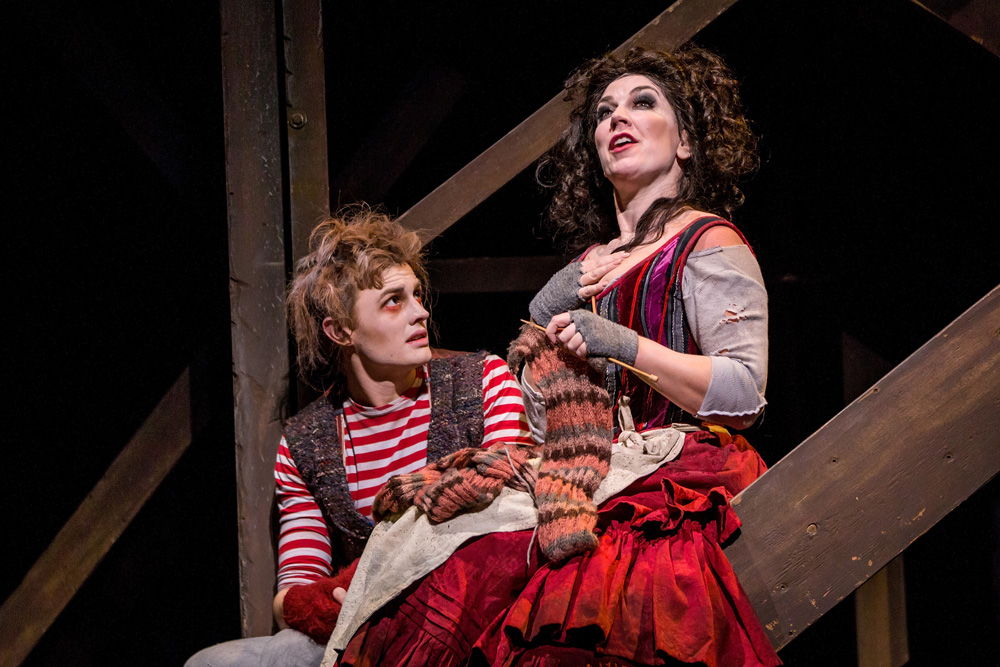
The song is a less good test of Mrs Lovett, after Sweeney the musical’s most crucial character: a weak singer anywhere else in the cast list would be annoying, but a weak Mrs Lovett would be nearly fatal. As we get to her more challenging scenes, and especially in the showstopper number “A Little Priest”, it emerges that Antoinette Halloran is very good. She’s funny, she’s sad, she’s hopeful, and she can really sing. Best of all, her acting serves as the perfect foil for Rhodes’s: he puts all his emotion into his voice and almost none into his face or body, whereas she is easy to read, in fact a joy to read. But Sweeney can’t read her. The consequences for their partnership are written right into their combined stage presence. Between them, Halloran and Rhodes would be all the reason you’d need to go to this production, even if it fell to pieces elsewhere: which it doesn’t.
There were a handful of young audience members at opening night, so one warning for parents: this is a show to take your kids to only if you’re happy to explain some fairly dark sexual references afterwards. Also, of course, many throats are cut — though by comparison with the buckets-of-blood Tim Burton cinematic version, the production is a model of tasteful restraint.
Sweeney Todd, the Demon Barber of Fleet Street, The Civic Theatre, nzopera.com
Photos by David Rowland.

